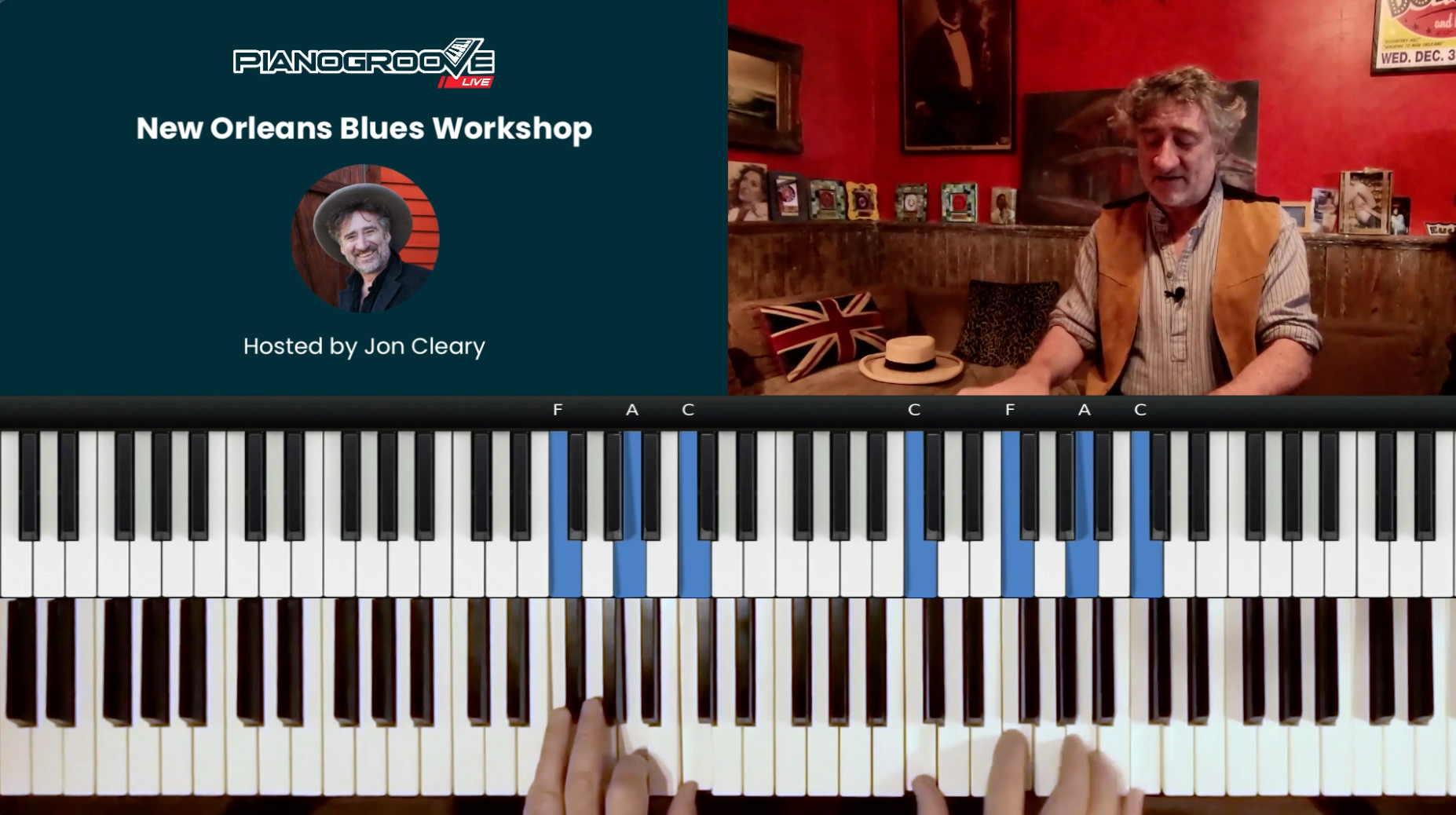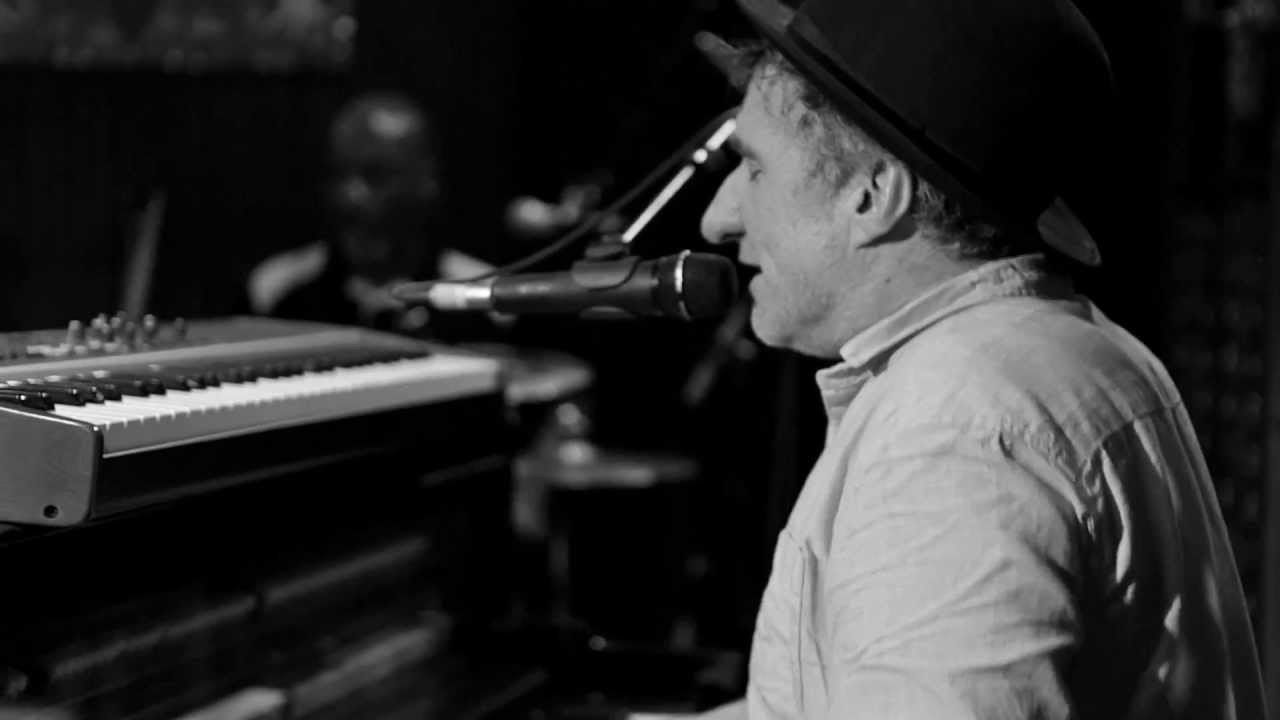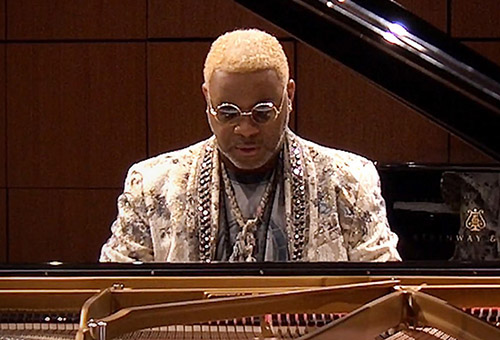

Jon Cleary
Jon Cleary is a British-born American funk and R&B musician based in New Orleans, Louisiana, where he has studied the musical culture and life of New Orleans for 35 years.
Seminar Description
Seminar Description
The Essence of New Orleans Funk Piano
Welcome to this deep dive into the unique rhythmic and harmonic elements of New Orleans funk piano. In this lesson, we’ll explore the roots of funk, its connection to rhythm and blues, and the key techniques that define this distinctive style.
From boogie-woogie to gospel, jazz, and syncopated rhythms, New Orleans funk is a melting pot of musical influences. We’ll examine what makes this genre groove, how to incorporate syncopation, and the essential role of basslines in funk piano playing.
The Origins of Funk Piano
New Orleans is widely recognized as the birthplace of funk, and the word itself was first used in the city’s music scene. Originally, “funk” referred to a strong, raw scent, but it later became a term describing music that had a certain rhythmic looseness and deep groove.
One of the most famous early funk drummers, Earl Palmer, played a key role in shaping the rhythmic feel of funk music. His drumming style emphasized syncopation, offbeat accents, and a distinctive shuffle feel—all elements that transferred naturally to piano playing.
Understanding Syncopation and Groove
At the heart of funk is syncopation—placing strong rhythmic accents where they wouldn’t normally be expected. This is achieved by stressing the offbeats, delaying certain notes, and playing slightly behind or ahead of the beat to create tension and movement.
A classic example of this is found in The Meters’ grooves, where simple basslines are transformed into infectious riffs through careful placement of accents. New Orleans funk piano follows a similar approach, mixing straight rhythmic patterns with unexpected offbeat accents to generate a “wobbling” feel.
The Role of the Left Hand in Funk Piano
Unlike traditional jazz comping, funk piano playing often requires the left hand to function as a bass player, locking into a groove with the drummer and bassist. Funk basslines commonly emphasize:
- Offbeat accents – Placing emphasis on the “and” of the beat rather than the downbeat.
- Ghost notes – Quiet, percussive notes that add texture and depth to the groove.
- Ostinato patterns – Repetitive, cyclical basslines that establish the funk feel.
For example, a common New Orleans-style left-hand pattern might outline a C7 chord with a grooving bassline:
C – E – G – A – Bb – A – G – E
This type of line creates a rolling, syncopated feel that serves as the foundation for funk piano.
Right Hand Chords and Riffs
The right hand in funk piano typically plays rhythmic stabs, chord voicings, and melodic fills. Unlike traditional jazz comping, where voicings are more fluid, funk piano uses tight, percussive chords that emphasize rhythm over harmony.
Key techniques include:
- “Popcorn” stabs – Short, sharp chords played in a rhythmic pattern.
- Call-and-response phrasing – Answering the left hand’s bassline with complementary chords or riffs.
- Sliding grace notes – Bluesy embellishments that add character and grit to the sound.
For example, in a New Orleans-style groove, you might play a C7 chord with syncopated rhythmic punches:
C-E-G-Bb (chop) – rest – C-E-G-Bb (chop)
This interplay between the hands creates a full, layered sound that drives the groove forward.
Applying New Orleans Funk to a Blues Progression
To put these elements into practice, try playing a 12-bar blues in the style of New Orleans funk. Keep the left-hand bassline steady while experimenting with right-hand syncopation. A typical progression might look like:
C7 (4 bars) → F7 (2 bars) → C7 (2 bars) → G7 (1 bar) → F7 (1 bar) → C7 (1 bar) → G7 (1 bar)
Within this form, focus on:
- Locking in a strong left-hand groove
- Using staccato chord stabs in the right hand
- Adding rhythmic anticipation and delayed accents
By combining these techniques, you’ll develop the loose, greasy feel that defines New Orleans funk.
Practice Tips
- Master the Offbeat – Practice playing rhythms where the accents land on the “and” of each beat rather than the downbeats.
- Listen to the Masters – Study the playing of Dr. John, James Booker, and Professor Longhair to absorb the essence of New Orleans funk.
- Develop a Strong Left Hand – Play basslines slowly and build up speed while keeping the groove locked in.
- Use Space Effectively – Funk is about the notes you don’t play as much as the ones you do—leave room in your phrasing.
- Experiment with Call-and-Response – Have your right hand “answer” your left hand to create dynamic, interactive grooves.
By internalizing these concepts and playing along with classic recordings, you’ll develop an authentic New Orleans funk feel and bring new life to your piano playing.







Thank you! loved it.
I wrote out one of the licks I licked at the end of the final boogie
second part